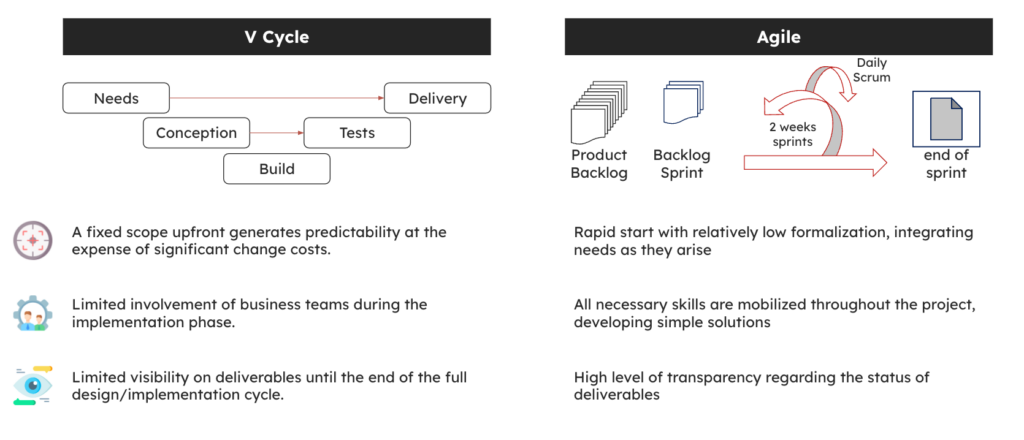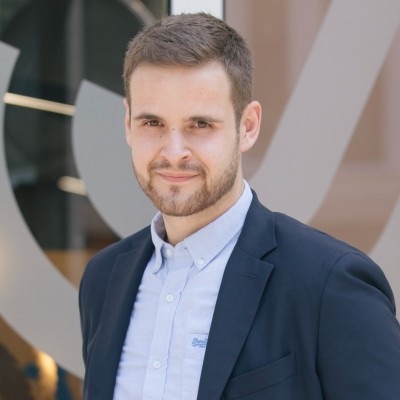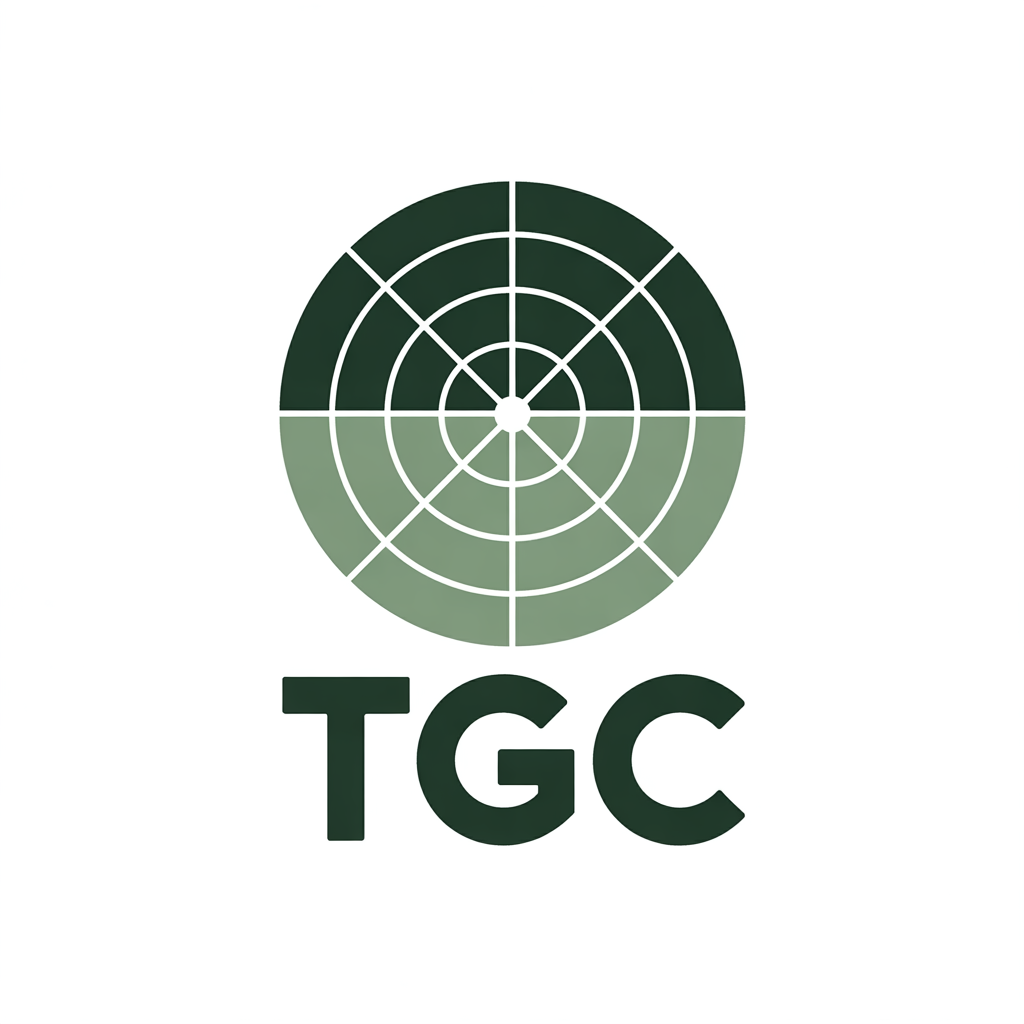As iGaming companies scale, managing multiple teams, aligning business objectives, and delivering value efficiently become increasingly complex. Many organizations start with traditional project management methodologies like the waterfall (V-model) or Scrum at the team level. However, as they grow beyond a certain size, they face challenges in coordination, resource allocation, and long-term strategic alignment.
This is where Scaled Agile Framework (SAFe) comes into play. It provides a structured approach to agile at scale, ensuring that growing iGaming organizations can maintain flexibility while optimizing delivery. In this article, we explore the different project management methodologies, their strengths and limitations, and why transitioning to SAFe becomes essential for iGaming businesses experiencing rapid expansion.
Traditional project management: the V-model
Why it worked historically
The V-model (waterfall approach) has long been a dominant methodology in project management, especially in industries with well-defined requirements and long development cycles. Its structured, sequential approach ensures:
- Clear documentation and predefined deliverables
- Predictable timelines and budgets
- A strong emphasis on quality assurance
Why it fails in today’s iGaming industry
The iGaming sector is fast-paced, dynamic, and highly competitive. With evolving regulations, emerging technologies, and ever-changing player expectations, the rigid nature of the V-model presents several challenges:
- Slow adaptability: Once a phase is completed, going back is costly and time-consuming.
- High risk of obsolescence: By the time a product is released, market conditions might have changed.
- Limited collaboration: Teams work in silos, leading to misalignment with business needs.
While effective in stable environments, the waterfall model struggles to keep up with the speed of innovation required in iGaming.
Agile teams: adopting Scrum for flexibility
What is Scrum?
Scrum is an agile framework designed to deliver value faster by breaking down work into short, iterative cycles called sprints (typically 2-4 weeks). It emphasizes collaboration, continuous improvement, and customer feedback.
Scrum roles
- Product Owner (PO): Defines and prioritizes work to maximize value.
- Scrum Master (SM): Facilitates the process, removes blockers, and ensures adherence to agile principles.
- Scrum Team: A cross-functional group of developers, designers, and testers working together to complete sprint goals.
Scrum process
- Backlog refinement: A prioritized list of user stories (tasks).
- Sprint planning: Teams commit to completing specific backlog items within the sprint.
- Daily stand-ups: Short meetings to align progress and address obstacles.
- Sprint review: Demonstration of completed work to stakeholders.
- Sprint retrospective: Reflection on what went well and what can be improved.
Advantages of Scrum
✅ Increased visibility: Regular reviews ensure stakeholders stay informed.
✅ Faster delivery: Small, incremental releases reduce the risk of large-scale failures.
✅ Team empowerment: Encourages autonomy and continuous improvement.
✅ Controlled budgets: Scope adjustments can be made within sprints without significant cost overruns.
Limitations of Scrum
❌ Scalability issues: Scrum is optimized for small teams (typically 5-10 members).
❌ Coordination challenges: Multiple Scrum teams working on interconnected projects can become misaligned.
❌ Resource allocation: Managing dependencies across teams can be inefficient.
As an iGaming company expands, having multiple Scrum teams working in isolation creates inefficiencies. The need for better synchronization, strategic alignment, and resource optimization leads to the adoption of agile at scale.

Scaling agile: why SAFe is the solution for growing organizations
What is SAFe?
The Scaled Agile Framework (SAFe) extends agile principles beyond individual teams to an enterprise-wide level. It is designed to help large organizations coordinate multiple teams, align with strategic goals, and deliver value consistently.
Why iGaming companies might need SAFe
As iGaming businesses grow, they face key challenges:
- How to synchronize multiple agile teams?
- How to prioritize and allocate resources efficiently?
- How to ensure long-term strategic alignment while maintaining agility?
SAFe addresses these issues by introducing structured layers of coordination while preserving agile’s core principles.
Key principles of SAFe
Alignment
Ensures that missions, visions, and strategies are shared and understood across all levels—from portfolio management to development teams. Product teams are splitted in « Trains » (Agile Release Train), and each train delivers a Value Stream.
Ex: A train « Payment » focusing on payment products, such as Paypal, Subscriptions, and check-out solutions.
An Agile Release Train is composed of multiples scrum teams.

Transparency
SAFe encourages open communication, visibility into progress, and learning from failures to continuously improve, as every 3 months a PI Planning occurs.
Value-driven organization
Organizes teams around value streams, ensuring that every effort contributes to business and customer success.
Decentralized decision-making
Empowers teams to make frequent, rapid decisions based on local context and expertise rather than relying on top-down approvals.
Collaboration and innovation
Creates an environment where cross-functional teams cooperate, experiment, and innovate to drive competitive advantage.
Built-in quality
Maintains high standards by integrating UX, security, and architecture into development processes.
Incremental development
Encourages a flexible, iterative approach to accommodate changing requirements and reduce time-to-market.
SAFe methodologies works in 3-months increments, where features are planned and dependancies identifies.
Workflow optimization
Improves value stream efficiency by minimizing bottlenecks and optimizing work prioritization.
Conclusion
As iGaming companies scale, traditional project management approaches like the V-model become outdated, and even Scrum-based agile teams struggle with coordination and resource management.
SAFe emerges as one solution for large organizations, offering a structured yet flexible framework that:
✔ Aligns teams with business strategy
✔ Ensures faster, high-quality delivery
✔ Optimizes resource allocation
✔ Encourages continuous improvement
By adopting SAFe, growing iGaming businesses can remain competitive, innovative, and responsive to market demands while maintaining agility at scale deal success.
We’ve implemented the SAFe frameworks in large CIO departments in Banking and adapted the frameworks for an iGaming affiliate facing hyper growth and lack of project methodologies.
Need help running your projects or implementing a new project methodology ?
Need help running your projects or implementing a new project methodology ?
Reach us directly through the following links to discuss how we can help.

Pierric Blanchet
Founder @ TGC
Frequently asked questions by our iGaming clients
The iGaming industry evolves rapidly, requiring constant updates to meet player expectations and regulatory changes. The waterfall model’s rigid, sequential approach makes it difficult to adapt quickly.
As companies grow, they struggle with team coordination, dependency management, and strategic alignment. Without a structured framework, multiple agile teams can work in silos, reducing efficiency.
SAFe introduces Program Increments (PI), a structured planning cycle where multiple teams align on priorities and dependencies. It ensures that all teams are working towards common business objectives.
While SAFe is designed for scaling agile, even mid-sized companies can benefit from its structured approach to coordination, transparency, and value delivery. As always, frameworks and methodologies must not be used by-the-book.
SAFe improves delivery speed by reducing bottlenecks, enhancing cross-team synchronization, and encouraging incremental releases with built-in quality assurance.


